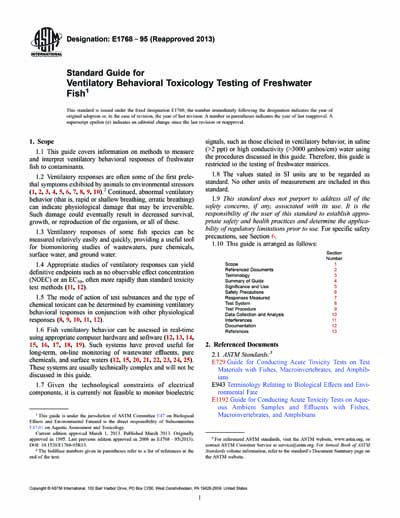Historical
ASTM E1768-95(2013)
Standard Guide for Ventilatory Behavioral Toxicology Testing of Freshwater Fish
1.1 This guide covers information on methods to measure and interpret ventilatory behavioral responses of freshwater fish to contaminants.
1.2 Ventilatory responses are often some of the first prelethal symptoms exhibited by animals to environmental stressors (1, 2, 3, 4, 5, 6, 7, 8, 9, 10).2 Continued, abnormal ventilatory behavior (that is, rapid or shallow breathing, erratic breathing) can indicate physiological damage that may be irreversible. Such damage could eventually result in decreased survival, growth, or reproduction of the organism, or all of these.
1.3 Ventilatory responses of some fish species can be measured relatively easily and quickly, providing a useful tool for biomonitoring studies of wastewaters, pure chemicals, surface water, and ground water.
1.4 Appropriate studies of ventilatory responses can yield definitive endpoints such as no observable effect concentration (NOEC) or an EC50, often more rapidly than standard toxicity test methods (11, 12).
1.5 The mode of action of test substances and the type of chemical toxicant can be determined by examining ventilatory behavioral responses in conjunction with other physiological responses (8, 9, 10, 11, 12).
Content Provider
ASTM International [astm]






